Author: Steven Ehrlich Source: unchainedcrypto Translation: Shan Ouba, Golden Finance
It’s no secret that Ethereum hasn’t had a good year. It’s lost ground to multiple key competitors, the community is demanding change, the Ethereum Foundation has undergone major personnel changes, and the roadmap has been completely rewritten. Questions remain about how it can stand up to other layer 1 public chains and even the layer 2 networks it has spawned.
But despite this, it has finally ushered in a clear bullish momentum and has outperformed its competitors in recent days.
I also talked to some market experts who told me that Ethereum’s run is not over yet.
Ethereum breaks through the $3,000 mark and is expected to continue to rise
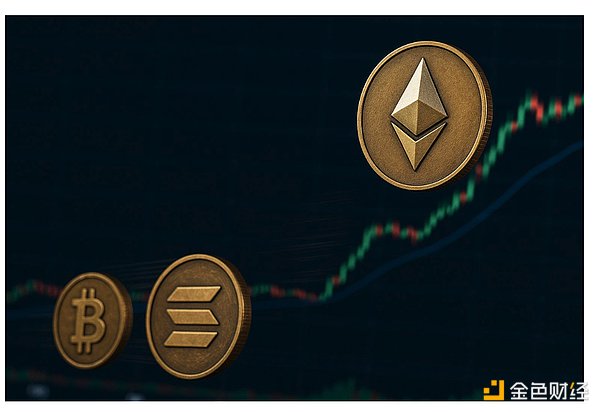
While Bitcoin (BTC) entered a consolidation period after last week’s sharp rise (breaking $120,000 for the first time and setting a new high of $123,000), Ethereum (ETH), the world’s second largest cryptocurrency by market value, seems ready to unlock a new round of gains.
In addition to being boosted by the rise of Bitcoin and the positive developments in the U.S. Congress on stablecoins and broader market regulation bills, Ethereum has also benefited from a group of crypto companies using it as a "crypto treasury" asset. For example, Sharplink (SBET) and Bitmine (BMNR) have accumulated ETH worth $866.8 million and $503.8 million, respectively. In addition, this trend of "crypto treasury companies" has just started, and there will be more followers in the future.
The current price of ETH is about $3,088, and it is rapidly recovering the gap with major assets such as Bitcoin and Solana (SOL). In the past three months, Ethereum has risen by nearly 90%, far exceeding the performance of other major crypto assets.
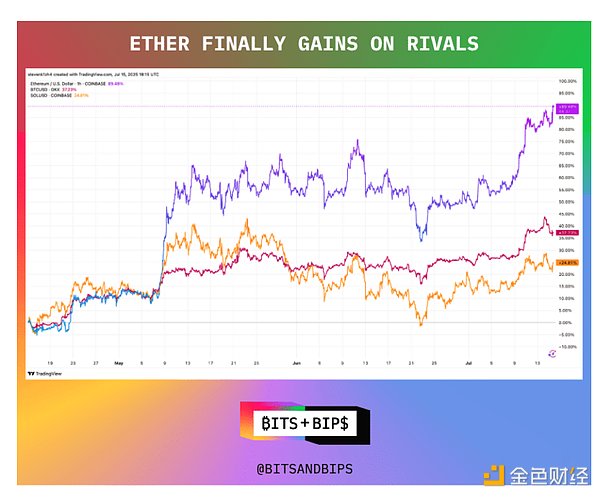
ETH's price chart showed multiple bullish signals, including the so-called "golden cross" - the 50-day simple moving average (SMA) crossed above the 200-day moving average. In addition, the MACD (exponential moving average convergence and divergence) indicator also turned positive, which is a common tool in technical analysis to measure short-term momentum.
As can be seen in the chart, ETH had a golden cross at the end of June, and the MACD indicator turned positive at the same time. When the MACD line (the difference between the 12-day and 26-day EMA) crosses above the signal line (9-day EMA), it is often seen as a signal that the short-term trend has turned bullish. EMAs are similar to SMAs, but give more weight to recent prices.
In addition, ETH has also managed to break through a key resistance level - its 200-day SMA, which has been tested several times since the beginning of May. Previously, it had already crossed above its 100-day moving average in May.
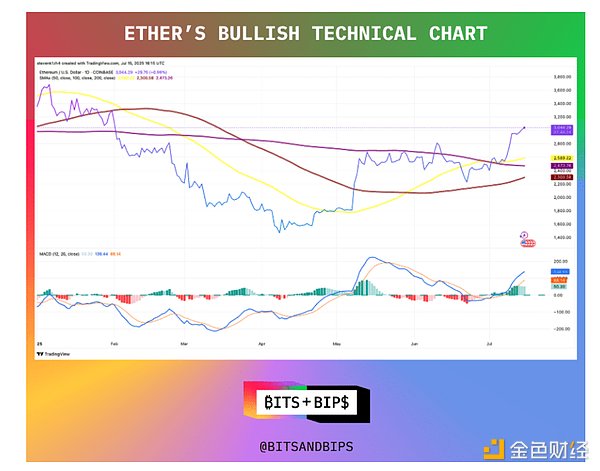
There is still room to rise
From a technical perspective, Ethereum seems to be in the earlier stage of Bitcoin's bull cycle. First, its MACD crossover was completed below the zero axis - that is, the 12-day and 26-day EMAs are equal. Such crossovers are often seen as early signals of a shift from a short trend to a long cycle, and some analysts believe that this is a good buying opportunity.
This view is also supported by the Bitcoin comparison chart. Bitcoin's MACD crossover occurred earlier and was completed near the zero axis, indicating that its upward cycle started earlier and did not experience the obvious negative sentiment and price pressure that Ethereum had experienced before. Bitcoin's golden cross occurred in mid-May, and it had already broken through the 200-day SMA in April, showing that it was ahead of the market.
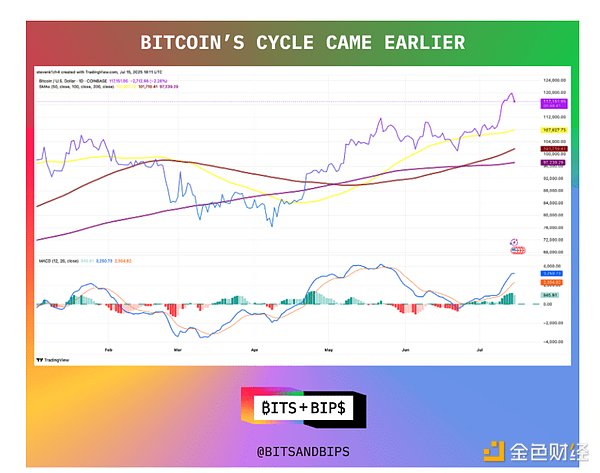
Traders' expectations for future ETH price movements have also diverged from Bitcoin. A useful measure is "implied volatility," which infers the market's expectations of future volatility by analyzing the pricing of 30-day options.
In traditional finance, the most famous tool is the VIX (Chicago Board Options Exchange Volatility Index), known as the "fear index", which is usually negatively correlated with the S&P 500 Index (SPY). In other words, a rise in the VIX is often seen as a sign of market panic.
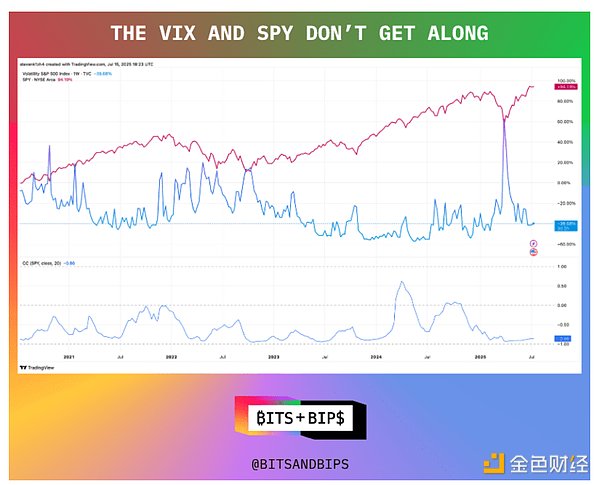
However, in the crypto market, this relationship is slightly different. Cole Kennelly, founder and CEO of Volmex, said that the "fear index" in the crypto market also shows a negative correlation during periods of market fear, but a positive correlation during periods of market "greed", that is, the spot price and implied volatility will rise simultaneously.
For ETH, several interesting phenomena are happening. First, the Ethereum Volatility Index (EVIV) has started to rise again after a brief decline at the end of June. More importantly, its volatility level relative to Bitcoin is also increasing, reaching its highest level since 2022. This generally means that the market's bullish sentiment on ETH is increasing, and subsequent momentum is expected to continue.
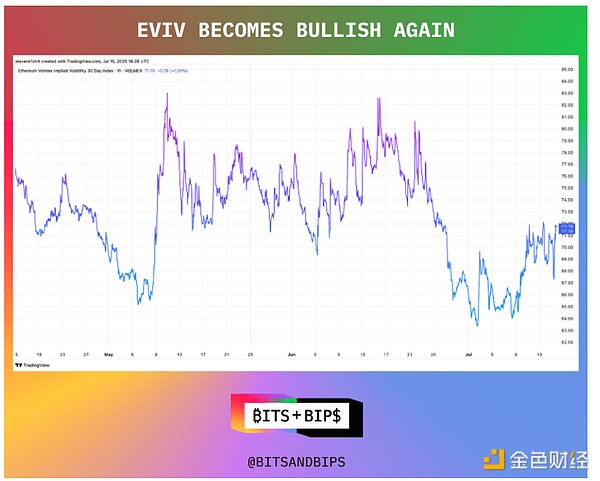
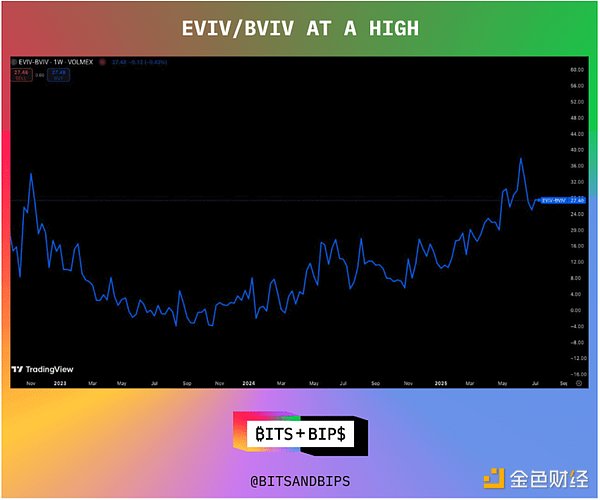
How high is the space?
Will Tamplin, senior technical analyst at Fairlead Strategies, said that the next resistance level currently faced by ETH is around $3,100. Therefore, despite the bullish technical signals mentioned above, ETH may consolidate here for a short time.
Ethereum is now in the overbought zone, but no real sell signal has yet appeared. It can be said that this is another "litmus test" stage. I would not be surprised to see it briefly digest the recent gains, but from all the evidence mentioned previously, it will eventually break through and continue the trend. Once it breaks through $3,100, the next key target will be $4,000 - a price that Ethereum has not reached since January.

 Kikyo
Kikyo












